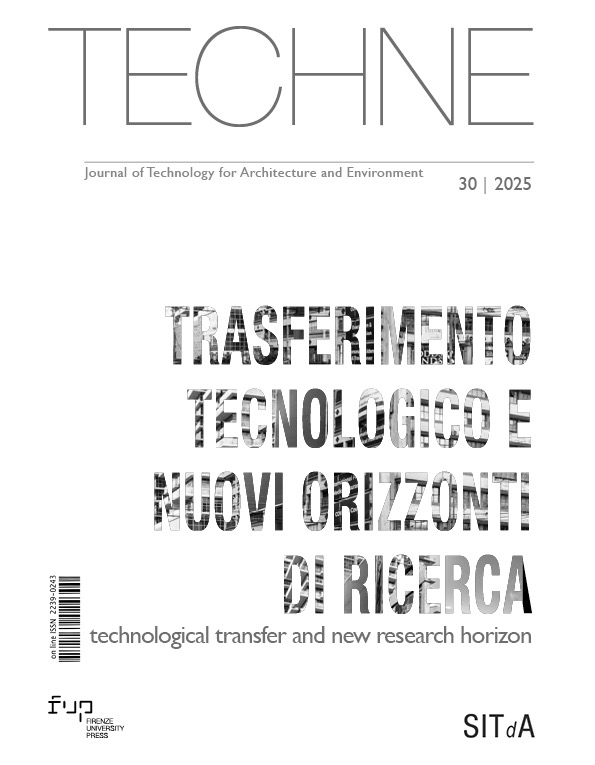Published 2025-11-07
Keywords
- Building sustainability,
- Technology transfer,
- Production chain,
- Human-building system,
- Beneath the overpass
How to Cite
Copyright (c) 2025 Andrea Tartaglia, Joseph di Pasquale, Gianpaolo Saverio Cugola

This work is licensed under a Creative Commons Attribution 4.0 International License.
Abstract
The aim of the research was the implementation of a university patent (Proxima modular hybrid construction system) from level 2 “Technology concept formulated” to level 6 “Technology demonstrated in relevant environment” of the Technology Readiness Level (TRL) scale, through the development of a working prototype. The collaboration with a network of companies set up specifically for this purpose gave the opportunity to establish and develop a new production chain, transferring updated theoretical and methodological knowledge to operators in the construction sector, with the aim of improving the ability to respond quantitatively and qualitatively to the demand for living and working spaces/services, to mitigate the environmental impacts associated with urbanisation, and to adapt the techno-typological models to the new paradigms of living.
Downloads
References
- AA.VV. (2011), Prefabbrication and Modularization, increasing productivity in construction industry. Small market report, McGraw-Hill construction, New York.
- Bruni, G., De Napoli, L., Mattanò, V.M. and Morabito, A. (2020), “From Opportunity Identification to Concept Generation of Sustainable Modular Buildings”, in Cavas-Martínez, F., Sanz-Adan, F., Morer Camo, P., Lostado Lorza, R., Santamaría Peña, J. (Eds), Advances in Design Engineering. INGEGRAF 2019, Lecture Notes in Mechanical Engineering. Springer, Cham, pp. 605-614. Available at: https://doi.org/10.1007/978-3-030-41200-5_66 DOI: https://doi.org/10.1007/978-3-030-41200-5_66
- Di Pasquale, J., Innella, F. and Bai, Y. (2020), “Structural Concept and Solution for Hybrid Modular Buildings with Removable Modules”, Journal of Architectural Engineering, Vol. 26, n. 3. Available at: https://doi.org/10.1061/(ASCE)AE.1943-5568.0000423 DOI: https://doi.org/10.1061/(ASCE)AE.1943-5568.0000423
- Etzkowitz, H., (1993), “Enterprises from science: the origins of science-based regional economic development”, Minerva, Vol. 31, n. 3, 326-360. Available at: https://doi.org/10.1007/BF01098626 DOI: https://doi.org/10.1007/BF01098626
- JCHS (2015), Emerging trends in remodeling markets, JCHS – Joint center for housing studies of Harvard University. Available at: https://www.jchs.harvard.edu/sites/default/files/jchs_improving_americas_housing_2015.pdf (Accessed on 23/10/2024).
- Innella, F., Arashpour, M. and Bai, Y. (2019), “Lean methodologies and techniques for modular construction: Chronological and critical review”, Journal of Construction Engineering and Management, Vol. 145, n. 12. Available at: https://doi.org/10.1061/(ASCE)CO.1943-7862.0001712 DOI: https://doi.org/10.1061/(ASCE)CO.1943-7862.0001712
- Mussinelli, E., Tartaglia, A. and Di Pasquale, J. (2017), “Typological and technological innovation for the application of hybrid systems to housing construction: between technological culture and application testing”, TECHNE – Journal of Technology for Architecture and Environment, Vol. 13, 287-294. Available at: https://doi.org/10.13128/Techne-19732






